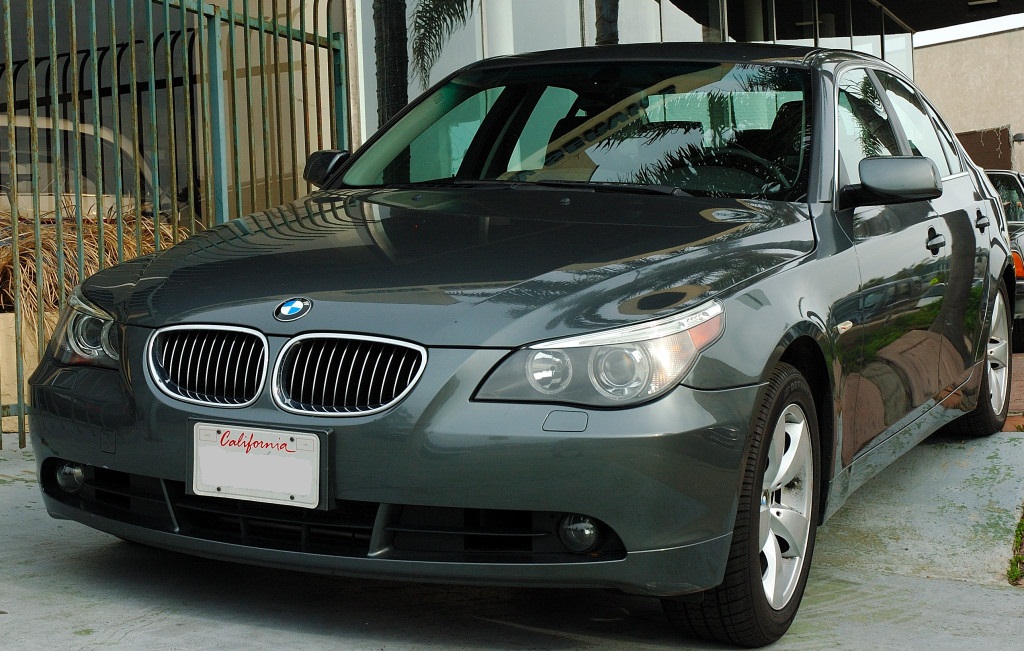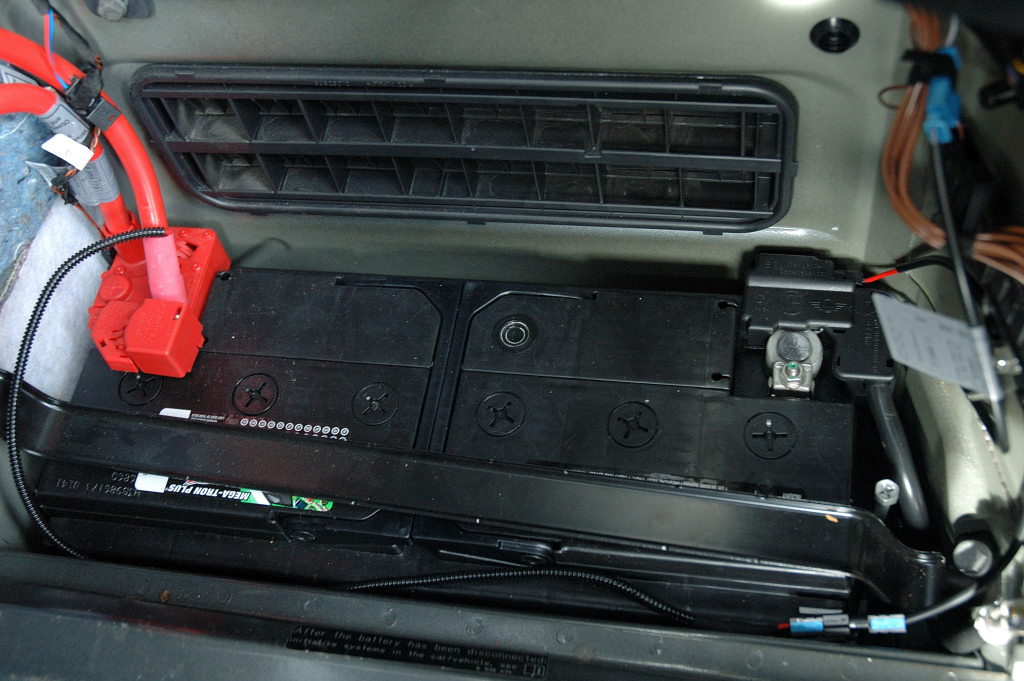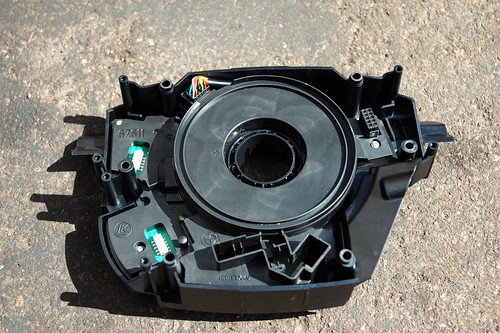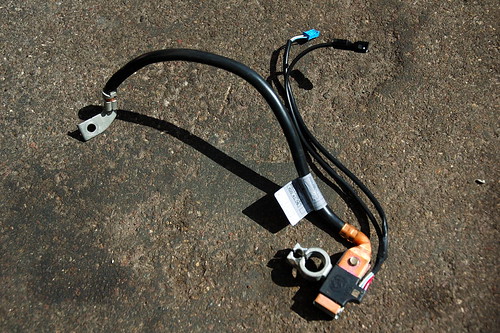
My hope is that you’ve found this posting before AAA, or other form of assistance, has come to rescue your BMW with a dead battery. I know you only have one hour to leave work, grab the kids from practice, and pick-up dinner, but stop and just have your BMW towed. DO NOT jump-start the car and DO NOT let any roadside assistance service install a new battery in your BMW. It can be the most expensive battery or jump start of your life.
BMW’s built from 1999 through about 2003 do not respond well to a jump start, and pretty much every BMW built after 2004 needs to follow an exact procedure in order to change the battery properly. While we’ve been aware of this for quite some time, a recent customer’s troubles has exemplified what can occur if someone tries to change a battery when they are ill informed.

I got a call from a towing company owner who was having trouble with a 2006 530i. They acted on a AAA call for one of our customers who’s battery had died. They went to the residence and jump-started the car followed by the AAA representative selling the customer a new battery. That is where the trouble started. The AAA rep disconnected the battery (strike one and strike two), and then installed the wrong size battery and re-connected the battery cables (strike three). Much to his surprise, the car would not start, the steering became locked, gear shifter locked, and there were no instrumentation lights. This 5 minute operation just resulted in what will be 3 weeks of the customer not having a car, and AAA coughing up a heap of $$.

The BMW electrical system has gotten extremely complex, mainly due to the fact that they aren’t just cars anymore. They are a home computer, entertainment center, home office, and a robotic personal assistant all wrapped in steel with an engine and 4 wheels. This all requires a significant amount of wiring, control modules, and electrical monitoring systems that make everything work. To complicate things, all of these functions rely upon each other for power and reliability. Simply put, they are strung together like old Christmas tree lights – one goes out and the rest of the strand is closed for business. The main difference is that instead of just grabbing that extra bulb that came with the lights, fixing the strand can start with a $280 module – in this case the Car Access System, or CAS.

There’s no guarantee that the rest of the lights are going to shine after it is replaced. These support groups are so fragile that any disturbance in power can render the module useless, which hopefully illustrates why changing a battery can become the most expensive little light you’ve ever tried to replace to get things going again. The second victim of this battery change attempt was the SZL, which is basically the control module that controls things such as wipers, instrumentation, steering wheel buttons, the horn, turn signals, etc, etc.

In short, you cannot just change a battery, there is a specific procedure that must be followed in order to do it successfully. Ben Amen at our shop explains:
The car must be off and key out of the ignition. The battery should be sonically tested for bad cells, and once tested poorly, should be replaced with a battery of the SAME SIZE and Cold Cranking Amperage to ensure these complex systems receive the same power input that they would from the factory. When removing the cables one must be very mindful of the delicate positive AND negative terminals, as each connection contains a very sensitive micro-control module on them that monitors power input and output of the battery in addition to communication with the airbag deployment string of modules.

Once the battery is replaced, it must be digitally registered with the car’s DME (Digital Motor Electronic control computer) so that the alternator ‘knows’ how to properly charge the battery and prevent premature wear on the alternator itself and the battery. Sometimes, some control modules must be updated when the battery is registered with the car.
OK, enough technical stuff. Let’s talk dollars. In this particular case, the car lost several modules and one battery cable. Tons of re-programming and coding was also needed as each step was executed during repair in order to save modules that had yet to be affected. Total? Over $2300 for one mistake. I’m starting to think there might be a market for battery warning stickers . . .
Chris Keefer
Independent Motorcars
5836 Autoport Mall
San Diego CA 92121
858-455-5836
www.independentmotorcars.com

This was very interesting reading as I had the battery replaced recently on an E39 M5.
Prior to the battery being replaced, I called BMW roadside assistance, who came out to do a jump start. I should point out that, in Australia, “BMW” roadside assistance is not actually provided by BMW, but outsourced to third parties for most call-outs. The tech I got was obviously not very well-informed regarding BMWs because I had to tell them that the jump start terminals were under the hood despite the battery being in the trunk. In any case the jump start got the vehicle going, but I noticed the date stamped on the battery was 2003 so I took the car to an independent service centre and requested that a new genuine BMW battery be installed.
It really annoys me that BMW would sanction a jump start (even when third parties are involved) when there is the potential for so much damage, which they surely know. I have either been lucky or yet to get the expensive repair bill if any control modules were damaged as a result.
In Australia, we are really at a disadvantage when this sort of situation arises: none of the roadside assistance guys actually carry the right type of battery, dealers are closed on weekends when you’re likely to need a new one, and none of the suppliers of other batteries (e.g. Bosch) carry anything close to the capacity required, so you’re forced to pay top dollar for BMW-branded units.
I guess the lesson for me here is just to be a lot more proactive as a customer, and insist that the battery is tested during routine servicing to avoid this sort of situation arising in the first place.
Now that I have the new battery, the magic eye is still showing “recharge”, I presume because it was on a shelf for a while and the independent who installed it didn’t connect a charger. Chris, should I be concerned about this causing unnecessary wear on the alternator (or the battery), or will it eventually get charged up?
As this vehicle only gets occasional use, my thought is to get a charger and use it, but what would be a safe charger to avoid causing electronic damage? Is the one in the BMW accessory catalogue safe, or perhaps you’d recommend something else, like the Autologic unit?
I have heard of people who change thier own batteries on E60/61 cars without having the battery registered with the dealer.
My understanding is that the car will not charge the new un-registered battery at the same rate and the new battery will not last as long. Can you shed some light on that??
Does this mean that the dealer can only provide a battery replacement and not an independant such as yourself?
Jeremy,
This is true. If you are careful, you can actually change the battery successfully. however, you do need to get it registered afterward. A good independent BMW shop should have the ability to register your new battery. Simply put, the car will adjust how it charges the battery based on a number of factors including the age of the battery. If you do not register the new battery the car will charge it as if it was the old one. I have heard of batteries exploding or popping in the trunk due to over-charging.
You do not have to go to the dealer only to get a battery replaced. You must get it registered, and it must be the same battery that the car was originally delivered with. You can use a different brand, but same type and rating is needed.
I bought a preowned BMW at Babelli motors. While searching for the right BMW, I test drove several models. I guess two of them were sitting for a while, so when the salesperson attempted to start two of the cars, the batteries were dead. The salesman “jumped” the cars with a portable charging unit. My purchase was one of those cars. As we conducted the test drive, the passenger restraint warning indicator was on. The “closer” told me that if my warranty (the vehicle was still under warranty) didn’t cover the fix, Babelli would pay. When I brought the car to BMW San Diego, the service rep informed me that the battery was not correct, and after purchasing a new one, the dealer would need to reprogram the computer. I was lucky that all errors were eliminated from the computer and I did not experience the significant problems in this blog. However, after spending $650, Babelli refused to cover my expenses which were not covered by the warranty. After spending over $25k on a car, my requests were met with a lack of returned calls and an owner “Max” who would not deal with me directly. My lesson learned: beware when buying from a used car dealer on Miramar Rd. Even though some may appear more “high end” than others, they are all from the same breed of wheelers and dealers.
Hey Chris… congrats on getting quoted in the Times today 🙂
Thanks Pat!
Interesting reading. I have an E46 330cic that I had to jump. No problems and the dealer later replaced the battery under warranty. I assume the older design was less complicated electronically. That said, this is my first and probably last BMW. A car that you can’t safely jump, or change the battery without a lot of mysterious incantations isn’t worth owning no matter how fun it is to drive. Which is too bad.
Jim,
Your car is less sensitive to jump starting, but still not the best thing to do to it. I will tell you that this is going to be the way of the future as BMW is not the only manufacturer with such complex electrical systems. As consumer demand drives more and more components into today’s cars, auto makers have no choice but to continue to evolve their electrical systems even if it seems to be a step backward. So, if you are looking to stay simple, you’ll need to stick to older cars moving forward.
Take Care,
Chris Keefer
I have dealt with a few BMW’s with battery problems in the past, and the damage can range from non existant to pretty big. It’s difficult when most recovery services default action for a dead battery is a jump.
this happened to my uncles car. The battery caught fire in the trunk and the car burnt to the ground. He was lucky that he smelled the burning plastic and got himself and his daughter out of the car first. All are okay.
can you save all your info on the computers by hooking a 12 volt low amps “motorcycle charger” to the jump + terminal and ground under the hood or do you have to do the cig. lighter thing. I have an 06 325i and I really don’t want to pay 400.00 for install. If I can order the exact same battery from the dealer or independent shop.
Bruce,
To carry out this operation you’ll need a battery voltage stabilizer unit. The one we use runs approximately $750 if I remember correctly. A trickle charger will not maintain a steady and constant voltage, you’ll need a stabilizer for that. In addition, the battery will have to be registered to the car after it is changed.
Good Luck.
Chris
Chris,
I’m wondering if this applies to the ’99 M3, since I have been led to understand that the ’99 and up rules usually do not apply to the ’99 E36. My current battery is at least 5 years old and I was planning to just run to interstate and replace it myself in the near future.
Thanks,
Danny
Danny,
This does not apply to you, go ahead and change your battery, be careful, and make sure you have your radio code for after the change.
Take Care,
Chris
You are in the clear, this applies to cars built around 2006 and newer.